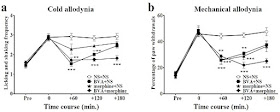Bee Therapy and Medicinal Honey in Muscat
Times of Oman, 1/28/2016
Did you know that the honeybee has been around for million years and are the only insect that produce food for humans? And did you know that every single thing a bee produces has tremendous medicinal properties? I was unaware of these facts and many other bee-related facts until I met Dr Hassan Talib Al Lawati last month.
I got acquainted with Dr Hassan at the 5th Annual Honey Market. He holds a PhD in Bee Science and works for the Ministry of Agriculture and Fisheries. I was fascinated by his knowledge and enthusiasm about all things related to bees and beekeeping, so I was thrilled when he invited me to his Bee Products Healing Centre to learn more about Apitherapy, an alternate medicinal treatment popular in Europe, UK, Brazil, Italy, Germany, and France, that uses honey and other bee products to heal diseases. Contrary to the popular misconception, apitherapy uses all hive products including, honey, propolis, pollen, royal jelly, and bee wax for healing, not only bee venom, for a wide range of ailments and it has been increasingly gaining popularity and credibility in Oman since its inception in 2009.
Dr Hassan’s Apitherapy Clinic in Al Khuwair exclusively uses bee products to heal various diseases and illnesses. Located on the 7th floor of the Al Amal hospital building, BPHC, it wasn’t difficult to find it as the honey aroma was so strong that I was able to follow the scent from the elevator to the clinic’s doorstep. I stepped over the threshold into a bee wonderland filled with yellow and black striped combinations, bee soft toys, bee wall hanging, animated charts on walls, and a showcase cupboard full of bright coloured syrups, lotions, and cream bottles, capsule strips, soaps, and shampoos. In addition to the standard bee products, like honey and bee wax, he offers therapies that use smell of honey for healing sinus, flu, lung infections, and asthma; bee sound to stimulate the ear drum and improve hearing; and honey massages on the face, back, and feet for cosmetic benefits. A “bee cocktail” mixes all the natural bee products and byproducts to cure weakness and insomnia among other illnesses...











